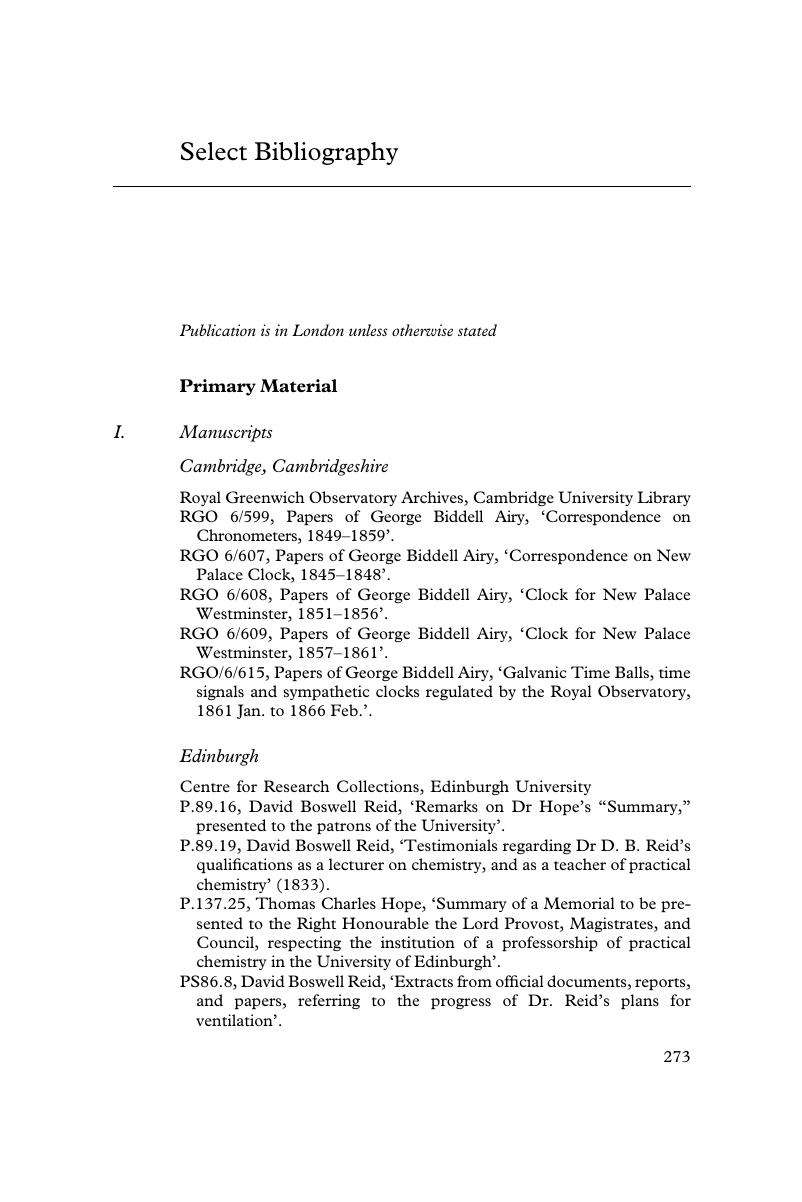Book contents
- The Victorian Palace of Science
- Science in History
- The Victorian Palace of Science
- Copyright page
- Contents
- Figures
- Preface
- Acknowledgements
- Map
- Introduction
- 1 A Radical Building: The Science of Politics and the New Palace of Westminster
- 2 Architecture and Knowledge: Charles Barry and the World of Mid-Nineteenth-Century Science
- 3 ‘The Science of Architecture’: Making Geological Knowledge for the Houses of Parliament
- 4 Chemistry in the Commons: Edinburgh Science and David Boswell Reid’s Ventilating of Parliament, 1834–1854
- 5 Enlightening Parliament: The Bude Light in the House of Commons and the Illumination of Politics
- 6 Order in Parliament: George Biddell Airy and the Construction of Time at Westminster
- Conclusion: The House of Experiment
- Select Bibliography
- Index
- References
Select Bibliography
Published online by Cambridge University Press: 30 October 2017
- The Victorian Palace of Science
- Science in History
- The Victorian Palace of Science
- Copyright page
- Contents
- Figures
- Preface
- Acknowledgements
- Map
- Introduction
- 1 A Radical Building: The Science of Politics and the New Palace of Westminster
- 2 Architecture and Knowledge: Charles Barry and the World of Mid-Nineteenth-Century Science
- 3 ‘The Science of Architecture’: Making Geological Knowledge for the Houses of Parliament
- 4 Chemistry in the Commons: Edinburgh Science and David Boswell Reid’s Ventilating of Parliament, 1834–1854
- 5 Enlightening Parliament: The Bude Light in the House of Commons and the Illumination of Politics
- 6 Order in Parliament: George Biddell Airy and the Construction of Time at Westminster
- Conclusion: The House of Experiment
- Select Bibliography
- Index
- References
Summary

- Type
- Chapter
- Information
- The Victorian Palace of ScienceScientific Knowledge and the Building of the Houses of Parliament, pp. 273 - 306Publisher: Cambridge University PressPrint publication year: 2017

